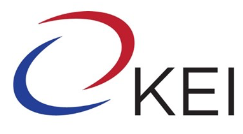2004 Posts located
Asia
2004 Posts located
This paper builds on Kiyota and Stern (2007), in which we analyzed the economic effects of a U.S.-Korea free trade agreement (KORUSFTA). In Section II, we review the objectives and…
May 25, 2011
The security alliance between the United States and the Republic of Korea (ROK) is the foundation for the architecture of strategic stability in Northeast Asia that has endured for more…
May 25, 2011
The Cold War in Northeast Asia became irreversible with the outbreak of the Korean War on 25 June 1950. Over the decades partial steps were taken to end it: rapprochement…
May 25, 2011
On 21 June 2005 the flag of the Socialist Republic of Vietnam flew outside of Blair House, across the street from the White House. Standing still on a windless day,…
May 25, 2011
Not everyone in Korea or foreigners abroad want to hear about national advertising initiatives that focus on mainstream issues like K-Pop, Hallyu or ancient Korean Kimchi culture. Instead, many want…
January 24, 2013
On January 11, 2013, the Korea Economic Institute of America recently led Washington DC’s celebration of Korean American Day by hosting a luncheon event to honor two Korean Americans for…
January 17, 2013
With North Korea announcing to the world that it will be attempting to launch a second satellite for 2012, many analysts have been speculating as to why Pyongyang is so…
December 7, 2012
In this episode we spoke to The Economist’s South Korea correspondent, Daniel Tudor. Having been based in Korea for over a decade, Tudor has just finished writing one of the…
November 26, 2012
This is the second piece in a series looking at how the issues identified in KEI’s annual “10 Issues to Watch for on the Korean Peninsula” series and other issues of note developed in 2022. The original “10 Issues” piece can be found here. As we enter the new year, Korea-Japan relations seemed poised for a…
December 20, 2022
This is the first piece in a series looking at how the issues identified in KEI’s annual “10 Issues to Watch for on the Korean Peninsula” series and other issues of note developed in 2022. The original “10 Issues” piece can be found here. Even before the pandemic little information was provided by the North Korean…
December 19, 2022
Since the mid-2000s, successive U.S. and South Korean administrations have touted the transformation of the ROK-U.S. alliance. They often highlight how a once asymmetric, Cold War alliance, rooted in strong military and security ties and shared sacrifice during the Korean War, has grown to encompass shared democratic and free-market values. In effect, U.S. and ROK…
December 7, 2022
Of the approximately 70 missiles tested by Pyongyang this year, Chairman Kim Jong Un celebrated the November 18 test of the Hwasong 17 intercontinental ballistic missile as the "completion of the world’s strongest strategic weapon." In remarks carried by the Rodong Sinmun on November 27, he also said that the test underlined "our daily-growing military…
